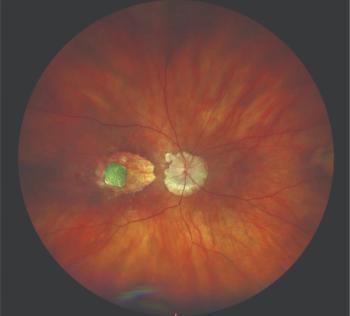
ASCRS Live: IOL placement and increasing patient safety with precision and accuracy
Ophthalmology Times© spoke with Robert Lin, MD at the 2023 ASCRS meeting in San Diego, where he shared the value of using the Insight 100 by Arcscan in his practice and why it provides a safer outcome for patients.
Ophthalmology Times© spoke with Robert Lin, MD at the 2023 ASCRS meeting in San Diego, where he shared the value of using the Insight 100 by Arcscan in his practice and why it provides a safer outcome for patients.
Video transcript
Editor’s note: Transcript lightly edited for clarity.
Robert Lin, MD:
Hi, this is Dr. Robert Lin, founder of IQ Laser Vision [and] also assistant clinical professor at the David Geffen School of Medicine at UCLA. Today I want to talk about a great technology that's really helped our practice. It's the Insight 100 from ArcScan. I've had this unit for over 5 years now and we've done thousands of scans for our patients.
The primary reason I purchased this unit is because of the very precise epithelial mapping that we're able to achieve with this unit. There are other units that have this function as well but I found that this one has the most reproducibility and precision and measures up to 1 micron of accuracy. The reason we have this technology is because when we look at topographies, a lot of patients...we're kind of puzzled. Over up to 20% of our patients that come in for a laser vision correction on consultation, we're wondering, is there a little bit of impure steepening. Is there some forme fruste keratoconus, is there some thinning that we're concerned about.
So this technology has a very low incidence of false positives and false negatives. Based on many studies, we're able to use this as an extra data point in order to collaborate with the topography, of course , the patient history of whether they're rubbing their eyeballs or not or if they're having thinner corneas to have a history of keratoconus. What we're looking for is an area of thinning over an area of steepening. If we're seeing both in epithelial thinning, usually in the inferior central or inferior area, and we correlate that with some inferior steepening or some posterior elevation on one of the Pentacams or Ziemer technologies then were very concerned that this person does have forme fruste or actually keratoconus. If we don't see that, and everything else looks pretty normal even though that the bad scan on the Pentacam or some other parameters look a little bit if it was giving us a little of a yellow flag, then we still feel more confident that this person still could be a candidate for laser vision correction.
Of course, there's other technologies which is like the ICL, and this is the second indication that we've been using for the ArcScan for the Insight 100. What we're able to do is have reproducible images of the anterior chamber and also behind the iris. Therefore, instead of using the white to white measurement as mandated by the FDA, we're able to actually measure the sulcus and actually see where we're actually supposed to put the lens in. Using that measurement developed by Dan Reinstein, we're able to very precisely calculate which of the four sizes of ICL is best suited for this patient. So we don't have the issues of overvault, which can cause a higher chance of angle closure glaucoma, or some other problems especially early postoperatively, or undersizing, which can cause a higher incidence of cataracts or rotation of toric lenses.
So the ArcScan using this function is amazing. I've compared other UBMs to try to reproduce this, but it's very technician dependent, so that even with the same technician on the same patient, we're unable to get reproducible results that are very precise. The machine here with the ArcScan actually has a little robot inside that whirls around really really quickly and lines up the picture so that it's reproducible and then the technician merely just puts a ruler on it and measures those different areas. So it has been a game changer for us as well, especially when we're operating on eyes that are smaller eyes where it's very precise. We need a very precise lens to put into this eye so that we get the safety that we need for the patient.
Newsletter
Don’t miss out—get Ophthalmology Times updates on the latest clinical advancements and expert interviews, straight to your inbox.





